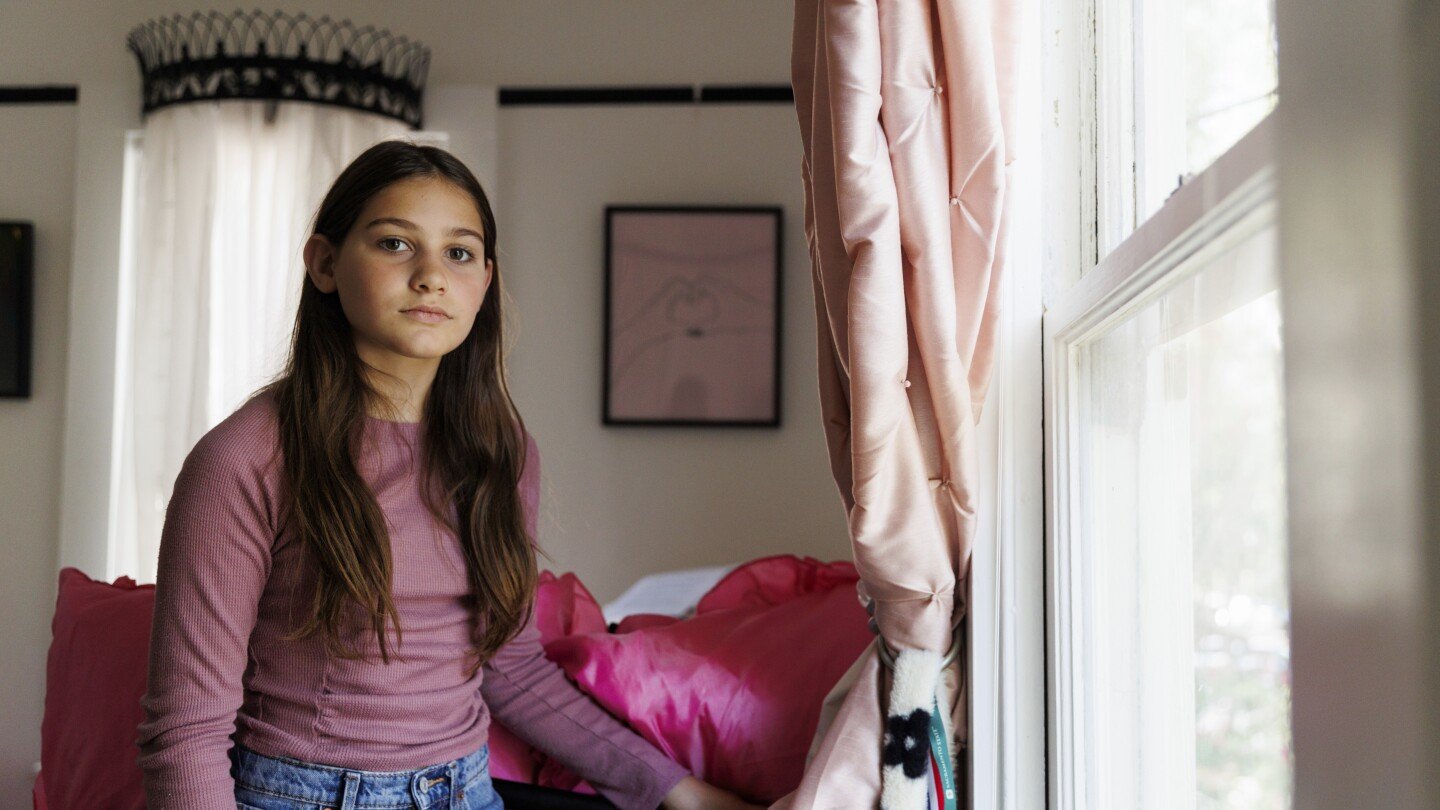When she was in fifth grade, Scarlett Goddard Strahan started to worry about getting wrinkles.
By the time she turned 10, Scarlett and her friends were spending hours on TikTok and YouTube watching influencers tout products for achieving today’s beauty aesthetic: a dewy, “glowy,” flawless complexion. Scarlett developed an elaborate skin care routine with facial cleansers, mists, hydrating masks and moisturizers.
One night, Scarlett’s skin began to burn intensely and erupted in blisters. Heavy use of adult-strength products had wreaked havoc on her skin. Months later, patches of tiny bumps remain on Scarlett’s face, and her cheeks turn red in the sun.
“I didn’t want to get wrinkles and look old,” says Scarlett, who recently turned 11. “If I had known my life would be so affected by this, I never would have put these things on my face.”
The skin care obsession offers a window into the role social media plays in the lives of today’s youth and how it shapes the ideals and insecurities of girls in particular. Girls are experiencing high levels of sadness and hopelessness. Whether social media exposure causes or simply correlates with mental health problems is up for debate. But to older teens and young adults, it’s clear: Extended time on social media has been bad for them, period.



10-year-olds have allowances. They can walk down the street to the drugstore or supermarket if they live in a city. The parents may not have known.
Aww man, squiddy you know this argument is specious. Yes children have allowances, but popular beauty products are expensive even by adult standards. For a kid to have access to the beauty products in question in the referenced quantities suggests a serious lack of parental oversight coupled with an undue and unchecked influence from predatory apps like tiktok. While yeah it’s not toally in the realm of the X-Files for a child to develop a makeup addiction, I think it’s much more likely that this is a case of severe parental neglect being overblown for clickbait than a serious social epidemic.
well there is always a cheap and crappy version of whatever beauty product you are looking for and those are even more likely to cause harm. But I imagine if a kid is trying to apply ten different skin care products a day, even a slightly attentive parent would notice in time.
Sure, and I won’t deny that there’s a problem to be addressed here. I just don’t think it’s the problem that’s being implied in the article. When I was in highschool, several classmates had severe skin problems caused by trying to use a homemade clorox paste to ‘erase’ their freckles. Another guy was hospitalized for trying to use ‘comet’ as a tooth whitening solution (my highschool also had a problem with cows from the neighboring pastures wandering in to eat the flowers in the planters, though, so maybe it’s not the best example to use here. They learned how to use the wheelchair buttons. The ranhers eventually dug a ditch to stop them, which didn’t stop the cows wandering but did provide a place for people to go and have sex during school hours. Yeah, it was a ‘sex ditch’ highschool. What was I talking about.)
My point is that children are idiots, have always been idiots and are always going to be idiots. I love them, and they’re much smarter than most people give them credit for, but still. The real issue here isn’t that they’re finding new and different ways in which to be idiots, but that parents aren’t willing (or more likely, aren’t able due to time, money or social pressures) to provide enough oversight to prevent said childhood dumbassery. The underlaying issues here are way more complex than ‘tiktok bad’, and those are what need addressing. Confiscating smartphones from kids (as some people here seem almost gleeful to advocate) is just a socially convenient way to not take responsibility for actually parenting your children, and denies them a vital tool for interacting with the modern world. It does far more harm than good. A fifteen minute conversation about the strategies tiktok uses to influence them will have more positive benefit on their lives than taking away their phones ever, ever would.
Great points.
Vaping is another example. Despite being aged restricted, kids still get their hands on vapes.
I honestly have no idea how much they cost.
A container of Hydramoist is $30 at my local Sephora, though you can get it cheaper (and more likely to be counterfiet!) online. Most of the other stuff referenced I couldn’t find the exact products (I didn’t try super hard) but they’re in the $10-$20 each range. It’s not bank breaking, but it’s certainly more money than the average ten year old has laying around.
I think this article raises very valid concerns about the extreme influence the beauty industry is having on younger and younger people, and I have no doubt the girls referenced here were subject to that influence, and I am not arguing that influence needs to be much more strictly regulated. In this case, it seems extremely sensationalized to claim that its common for ten year olds to have the resources needed to develop a serious addiction to popular skincare products. Really, it feels like something from the DARE era, but with “marajuana” replaced with “sephora”.